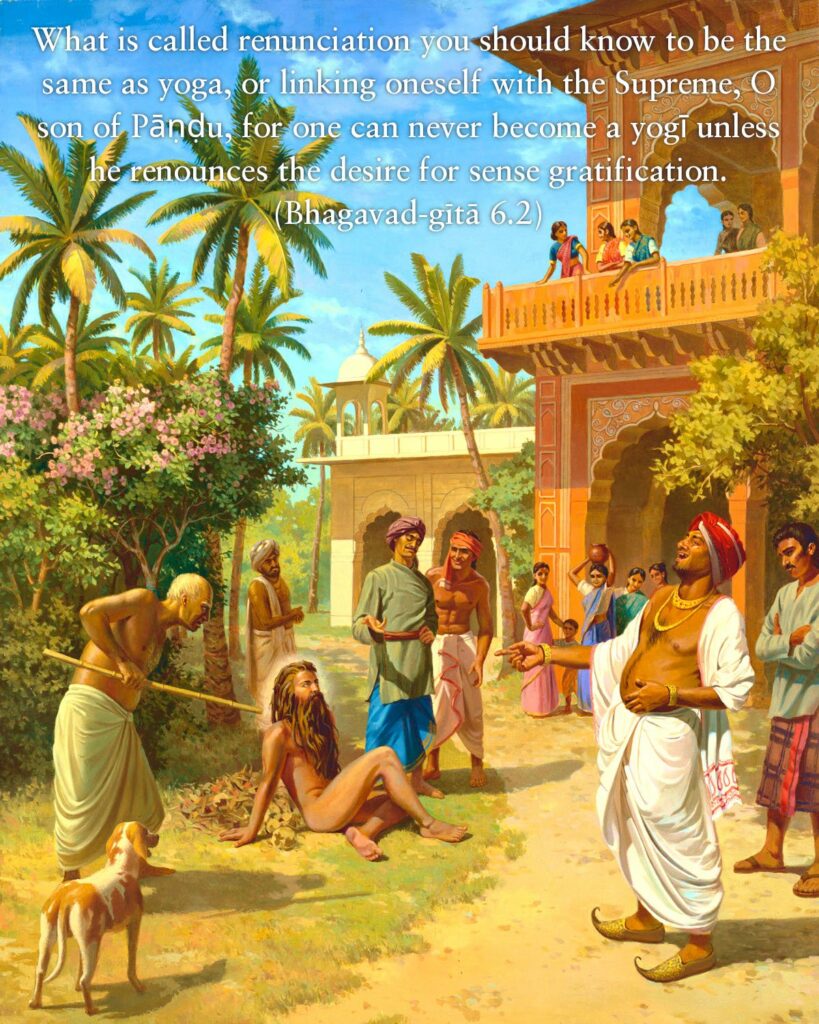यं संन्यासमिति प्राहुर्योगं तं विद्धि पाण्डव |
न ह्यसंन्यस्तसङ्कल्पो योगी भवति कश्चन || 2||
yaṁ sannyāsam iti prāhur yogaṁ taṁ viddhi pāṇḍava
na hyasannyasta-saṅkalpo yogī bhavati kaśhchana
yam—what; sanyāsam—renunciation; iti—thus; prāhuḥ—they say; yogam—yog; tam—that; viddhi—know; pāṇḍava—Arjun, the son of Pandu; na—not; hi—certainly; asannyasta—without giving up; saṅkalpaḥ—desire; yogī—a yogi; bhavati—becomes; kaśhchana—anyone
Translation:
O Arjuna! That which is called sannyasa, know that to be yoga also; no one who has not given up desire can ever become a yogi.
Commentary:
By sharp discrimination between the Self and non-Self, the Jnanayogi rejects anatma (non-self) and establishes himself in the Supreme Reality. The Karma yogi acts without any feeling of doership, without desire, without the sense of ‘I’ and ‘Mine’, and surrenders his work with its fruits to God. So acting he lives in the Supreme Reality. The Jnana yogi follows the path of introspection into himself by eliminating the senses the mind and the external world. The Bhakti yogi has no relish for anything in the world, and he contemplates the Lord repeating His name, singing His glories, and thus lives in bliss and blessedness. In this way whatever path man may follow – Jnana, Karma, Bhakti, Dhyana – the inner principle is the same (i.e.) the rejection of insentient material things. Besides this, life in the Divine is implicit in all these yogas. That is why the Lord teaches that sannyasa and yoga are the same in their goal and aim. No one who has not renounced desire, the ego-centric initiative (samkalpa) for possessing material things, can ever become a yogi. Without the renunciation of desire, to live an idle and aimless life is neither sannyasa nor yoga.
Question: Are sannyasa and yoga different?
Answer: No. What is called sannyasa is the same as yoga.
Question: When does a man become a yogi?
Answer: Only when he gives up desire and attachment does he become a Yogi.
Bhagavad Gita: Chapter 6 🔻 (47 Verses)
